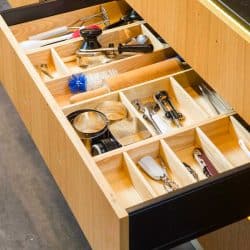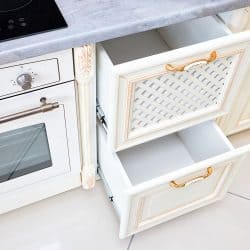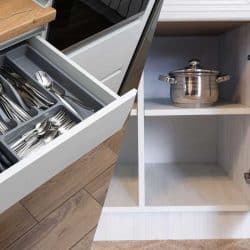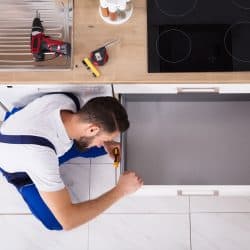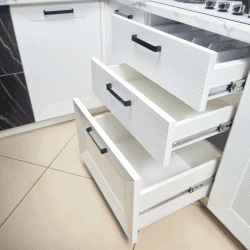The kitchen is the heart of the home. Whether you're in the market for a new house or looking to renovate, you want to know how much kitchen storage you're going to need before you commit. We've researched kitchen storage drawers to determine what works best for the average kitchen layout.
Your own individual circumstances will dictate how many drawers you need. However, in general, you want as many as you can comfortably fit into your space. Drawers are amazingly versatile and, in many cases, more convenient than cabinets of the same size.
So how do you determine how many drawers you need for your own situation? Read on to find out what factors can help you decide!
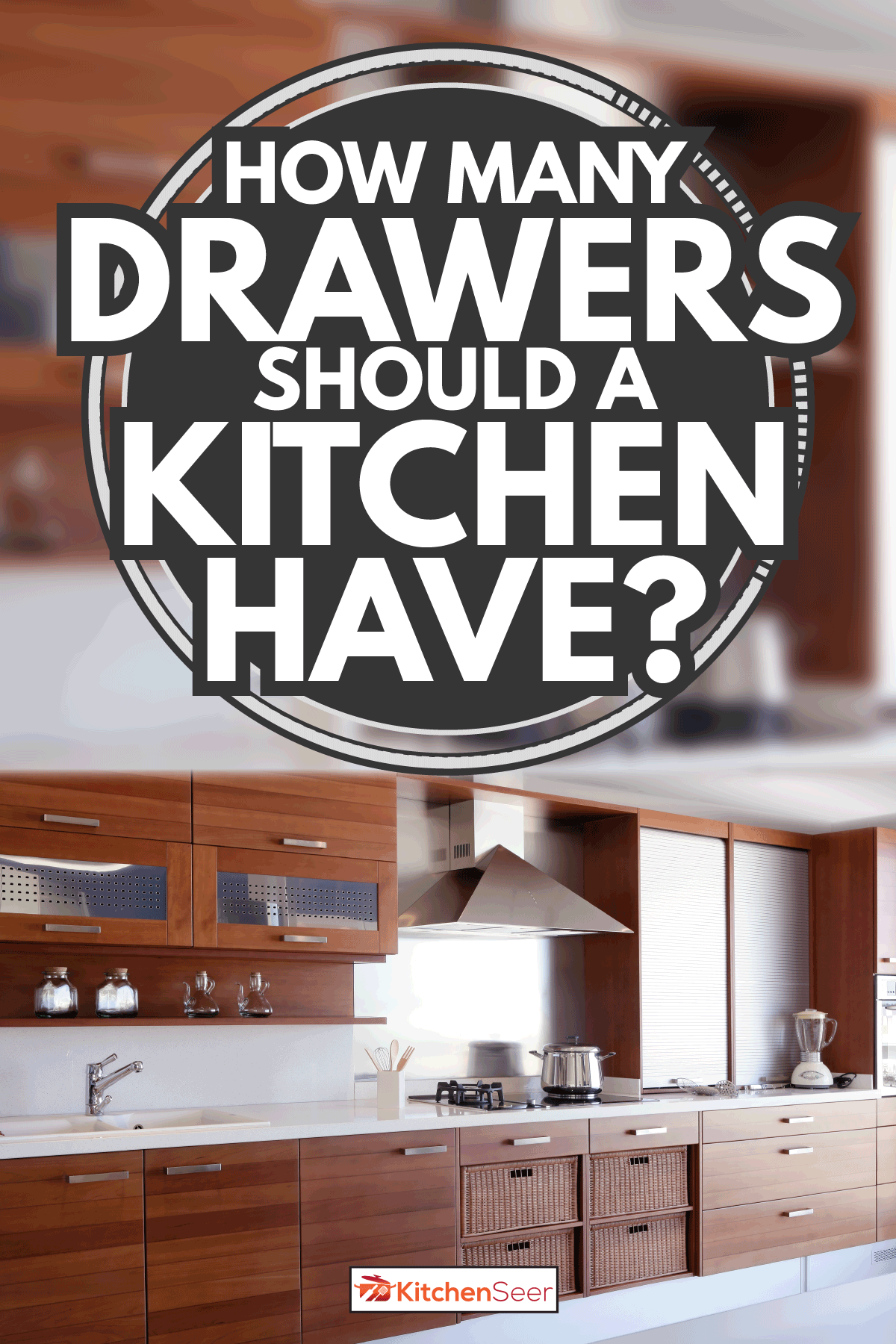
How many cabinets does the average kitchen have?
The average kitchen is between 100 and 200 square feet. Size variations are mostly linked to the size of your home. A small city apartment might have a 70 square foot kitchen; a suburban mini-mansion might have a 700 square foot kitchen!
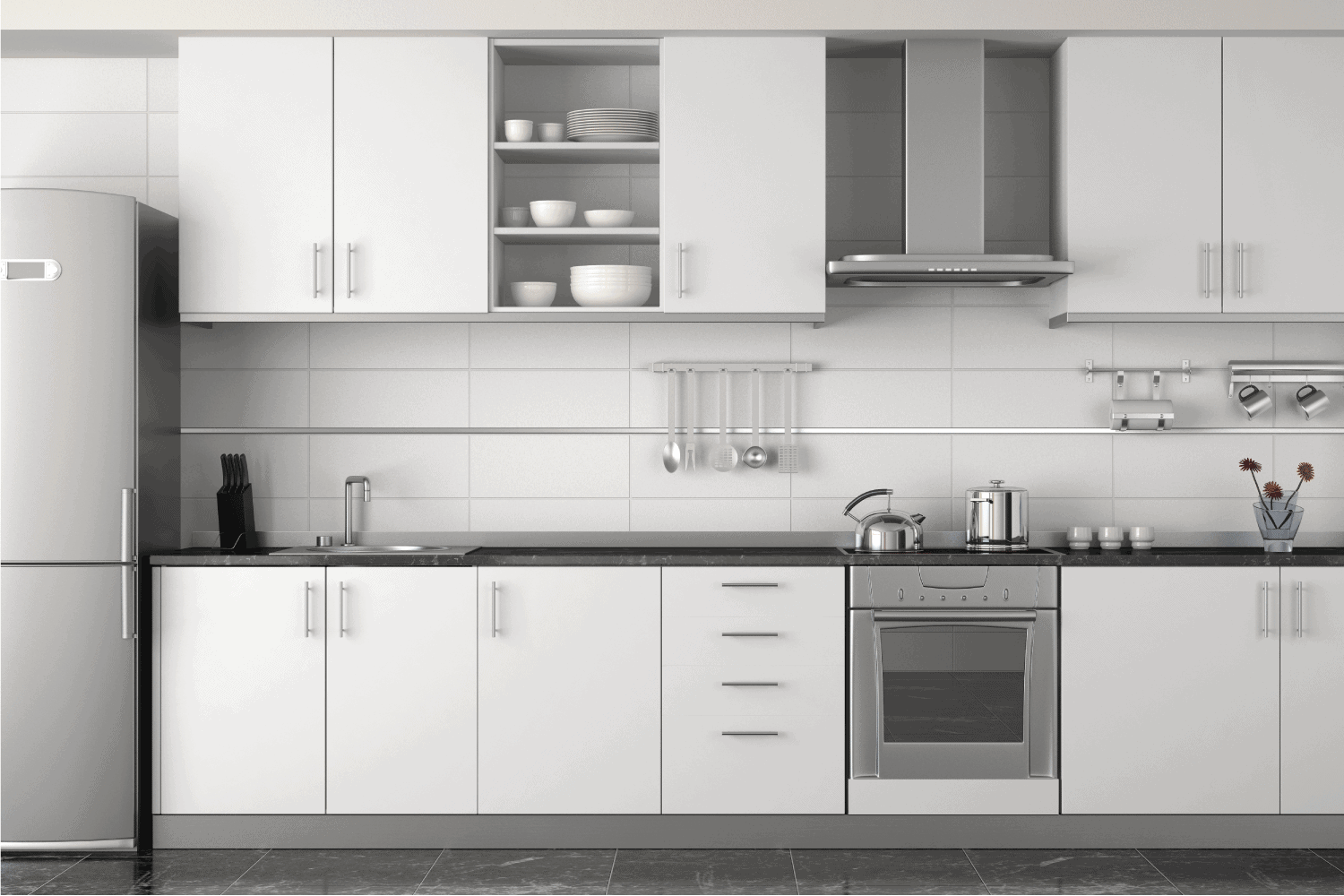
Many kitchen designers and cabinet retailers use a 10x10 kitchen as a reference point. The 10x10 kitchen has 12 cabinets. You can use this standard to compare prices between different retailers or different cabinet finishes. However, your own kitchen is probably not a perfect 10x10 foot square.
Nonetheless, this can give you a rough idea of how many cabinets you can fit into a given space. For example, if a 100 square foot kitchen has 12 cabinets, a 200 square foot kitchen will have at least 24 and likely a few more, given that you probably don't need two of each appliance.
How do I calculate my kitchen storage needs?

Since most people are not exactly average, most people will not need or want an exactly average-sized kitchen. But how do you tell what size kitchen you do need?
In the 1930s, an appliance company, Westinghouse, published the results of a study they had done on the ideal kitchen size. They determined that the ideal kitchen would have 6 square feet of wall cabinet space per person and a sufficient number of base cabinets to correspond to the upper cabinets, excluding spaces left for appliances.
They assumed that each family would need dishes for two guests as well. So, for example, a family of four would need 36 square feet of upper shelves and between 6 and 7-1/2 feet of linear space in the lower cabinets.
However, a lot of things have changed since the 1930s. After WWII, people began moving out of cities and into rapidly expanding suburbs. This allowed for larger houses with correspondingly larger kitchens. Moreover, in the last several decades, we've invented an ever-greater number of labor-saving gadgets for our kitchens.
If you don't cook much, you might be able to go 1930s size or even smaller with your kitchen. If you entertain frequently, or if you really love your small appliances, you probably want to go bigger.
The kitchen work triangle
A large kitchen is more a curse than a blessing if you're constantly running back and forth to get what you need. Around the same time, Westinghouse was studying the optimal number of kitchen cabinets, efficiency experts were attempting to determine the best possible layout.
Eventually, they came up with a concept known variously as "the kitchen triangle" or "the work triangle" or other similar names. The three points of the triangle are the fridge, stove, and sink. Each leg of the triangle should be 4 to 9 feet, and the entire triangle should be between 13 and 26 feet.
In recent years, the triangle idea has evolved into the idea of work zones. For example, you should have everything you need for food prep in one part of your kitchen, everything you need for cooking in another part, etc. Depending on your lifestyle, you might have some less traditional zones. Perhaps you have a desk in the kitchen where you sit to pay bills. Treat that the same way you would other zones, making sure, for instance, that you don't need to walk all the way to the other side of the kitchen to get a pen!
None of these guidelines are set in stone, but if you find yourself struggling with your kitchen layout, it might be helpful to consider things like whether your sink is too close to your fridge or whether you don't have enough storage within reach of the stove.
What goes where in kitchen drawers?
In order to make kitchen work zones, you have to know what to put in each zone. Some possibilities include:
- a food prep zone: cutting boards, knives, vegetable peelers
- a baking zone (can be combined with food prep in a smaller kitchen): mixing bowls, measuring cups, baking pans
- a cooking zone: frying pans, spatulas, pot holders
- a cleaning zone: sponges, dish soap, drying rack
Don't get too preoccupied with putting similar items together. Maybe you would prefer to have your most frequently used spices next to your stove instead of with the other dry goods. Maybe you're not much of a baker, so you keep your mixing bowls in a dedicated popcorn-popping zone! If you're not sure, try different arrangements out until you find the one that works best for you.
Within zones, you generally want to put lighter items in the upper cabinets and heavier items in the lower cabinets. Nobody wants to open a cabinet and get hit on the head by a cast iron frying pan! Having large drawers in your lower cabinets can come in handy for storing those heavy pots since you can lift them straight out instead of having to go rummaging in the back of a cabinet full of other heavy items.
Where do you put cutlery drawers in a kitchen?
Most people prefer to keep the dishes they use every day close to the dishwasher - or to the sink, if you don't have a dishwasher - so that when you're putting them away, you don't have to go back and forth across your kitchen incessantly.
If you have a sufficiently spacious drawer next to your dishwasher, this is a great place to put your cutlery. Alternatively, many people prefer to store their silverware in a kitchen island across from the dishwasher. Before you do this, make sure there's enough room to use the drawer when the dishwasher door is open.
DIY kitchen drawer organization
Most of us are familiar with the type of trays designed to fit in a kitchen drawer and hold silverware. However, these are far from the only possibility for making your kitchen more organized.
Shop drawer organization sets on Amazon.
You can use small mix-and-match organizers to maximize the use of your space and accommodate irregularly shaped items that wouldn't fit in a silverware organizer. For larger items, you can use dividers to separate each drawer into a few larger sections. You can also use a pegboard system for items that don't fit nicely into rectangles.
Check out these expandable drawer dividers on Amazon.
There are many different premade organizational items that you can purchase. However, if you can't find anything to meet your needs or if you want to save a bit of money, you can also make dividers yourself. Your local home improvement store should have various types of craft board available, and many stores will even cut the board to your desired lengths for you.
What to do when you have no kitchen drawers
Unfortunately, not all of us have the option to renovate our kitchen to give us all the storage space we want. So what do you do if you don't have drawers?
You can store some things on the countertop. Spices could go in a rotating caddy. Utensils — even silverware — could go in mason jars or attractive crocks.
Counter space isn't infinite, though, so you'll also want to go vertical. If you have a free wall, put up a pegboard and hang your most used items off it. Install hooks under your cabinets to hang your coffee mugs. Put up a magnetic strip for your knives.
Find cabinet storage solutions on Amazon.
For larger items, you can find a variety of options for making lower cabinets more functional. If you're able and willing to drill into the cabinets, you can add drawers. If not, you can get all kinds of freestanding options to keep you from having to dig through all of your pots and pans to find the one you need.
Make the most of your kitchen
People spend a great deal of time in their kitchens, and most of us wish we had more space. With the tips you've learned from this post, you can confidently figure out exactly how much space you need. Plus, you can maximize the space you do have to make your kitchen an enjoyable place to work.
Before you go, check out some of our other posts:
What Size Should Kitchen Drawers Be?
How To Add Drawers In Kitchen Cabinets




![Ceramic dishware and cutlery in kitchen drawers, How To Remove Kitchen Drawers [A Complete Guide]](https://kitchenseer.com/wp-content/uploads/2021/08/Ceramic-dishware-and-cutlery-in-kitchen-drawers-250x250.jpg)
